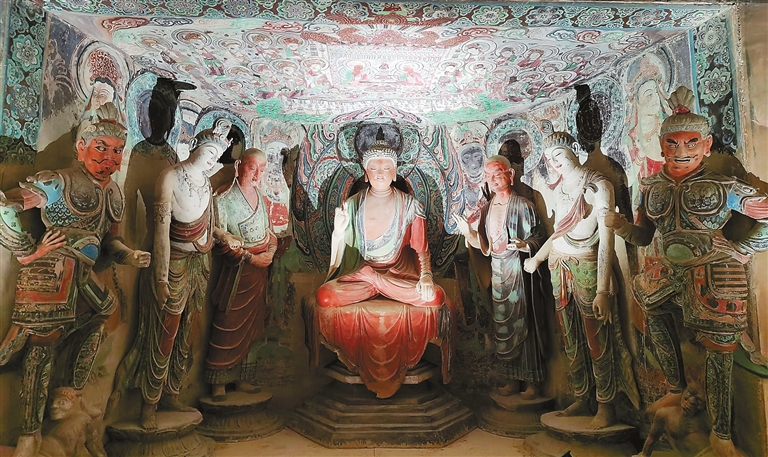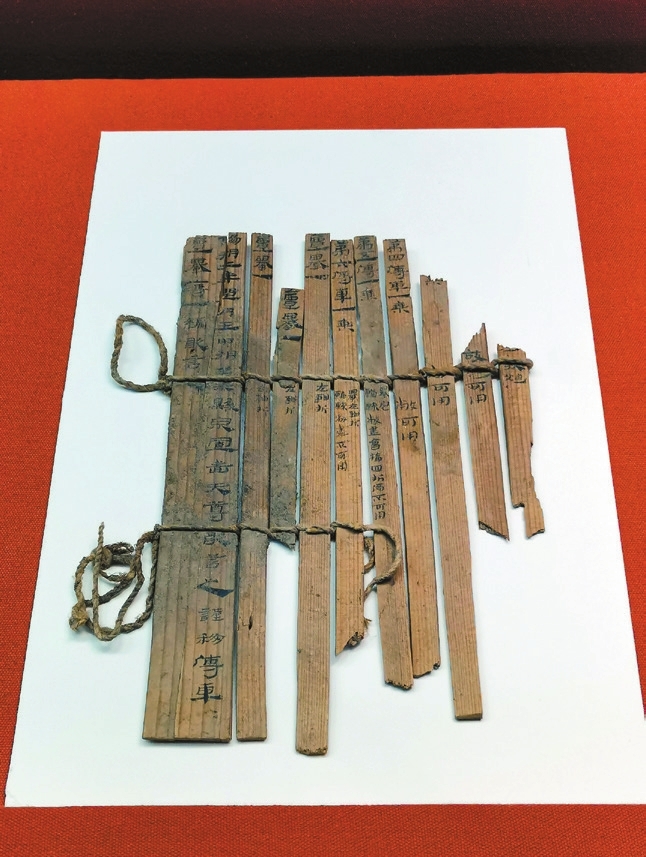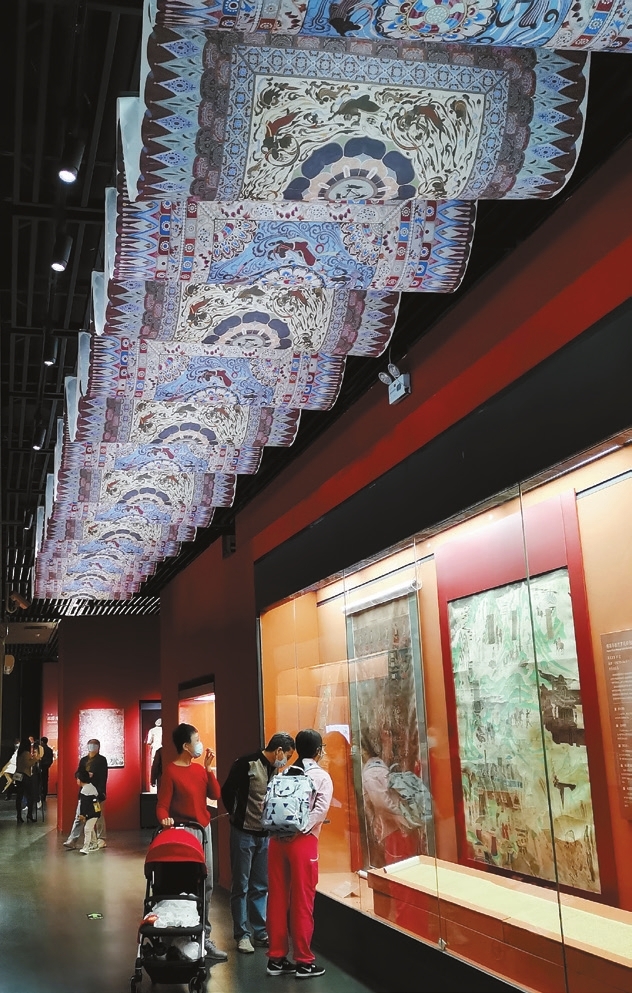



Cao Zhen caozhen0806@126.com IN this winter season until early spring, Shenzheners don’t have to fly to Northwest China to visit Dunhuang Mogao Grottoes because four life-sized Mogao cave replicas with mural reproductions all over their walls and ceilings have been set up in the Shenzhen Museum near the Civic Center for visitors to get an immersive view of the magnificent Dunhuang art. In collaboration with the Dunhuang Academy and 10 museums in Gansu Province, the Shenzhen Museum is presenting “Exchanges and Mutual Learning: The Cosmopolitan Art From Dunhuang Grottoes and the Hexi Corridor,” featuring ancient Dunhuang Mogao cave art and relics from Gansu. The four reproductions were designed based on four representative caves in the Mogao Grottoes: Cave 285 (built in 538-539 during the Western Wei Dynasty), Cave 220 (built in the 7th century in the early Tang Dynasty), Cave 320 and Cave 45 (built in the 8th century during the height of Tang Dynasty). Dating from the golden age of Dunhuang, Cave 45 is one of the most outstanding caves in China. The splendid statues in the main niche are rated as the most superb works of art and the murals are well preserved. Cave 285 has a pyramidal ceiling and is one of the most unique caves in Dunhuang, based on its design, rich contents, religious objects, aesthetic ideas and art form. It also stands witness to the fusion of Chinese, Indian and Central Asian cultures. Mogao Grottoes, located on the eastern cliff of Mingsha Mountain in the southeast of Dunhuang City, is the largest existing Buddhist grotto site in China. Its Buddhist art remains have the longest history and the richest content, and are the most exquisite and preserved in the world. Mogao Grottoes emerged in the 4th century when the Silk Road trade between the East and the West flourished. Dunhuang was one of the first trading cities encountered by merchants arriving in China from the West. It was also an ancient site of Buddhist religious activities and a popular destination for pilgrims. The caves reached their peak in the Sui (581-618) and Tang (618-907) dynasties, and were also carved in the later dynasties. Data shows that there are 492 remaining caves, more than 45,000 square meters of murals, 2,415 colored sculptures and more than 4,000 apsara statues in Dunhuang Mogao Grottoes, all of which are precious cultural relics for studying the history and art of the ancient Chinese society. “After 1,000 years of construction from the 4th to the 14th century, Dunhuang Mogao Grottoes is a collection of architecture, murals and colored sculptures known as a treasure house of world art,” said Zhao Shengliang, the Party chief of Dunhuang Academy. As an important gateway from China to the western regions, Dunhuang was a place where ancient Chinese civilization met and blended with thoughts, religions, arts and cultures of ancient India, ancient Greece, ancient Persia and other countries and regions. Impressive Buddha statues with exquisite sculptural skills and elegant styles, Han Dynasty (202 B.C.-A.D. 220) wooden slips, Central Asian coins, silk products, pottery and mural replicas are also on display at the exhibition. These enlightening murals present not only the mysterious world of Buddhism, but also of human life. Through diverse architecture, furniture, costumes, makeup, dance scenes and living utensils depicted in the murals, visitors can learn about various aspects of life, such as hunting, farming, textiles, transportation, war, trading, dancing and weddings, and see how the ancient people described the world and expressed human nature in daily life. Dates: Until March 20 Hours: 10 a.m.-6 p.m., closed Mondays Booking: WeChat account “iszbwg” Venue: Shenzhen Museum (of History and Folk Culture), Futian District (福田区深圳博物馆历史民俗馆) Metro: Line 2 or 4 to Civic Center Station (市民中心站), Exit B | 
